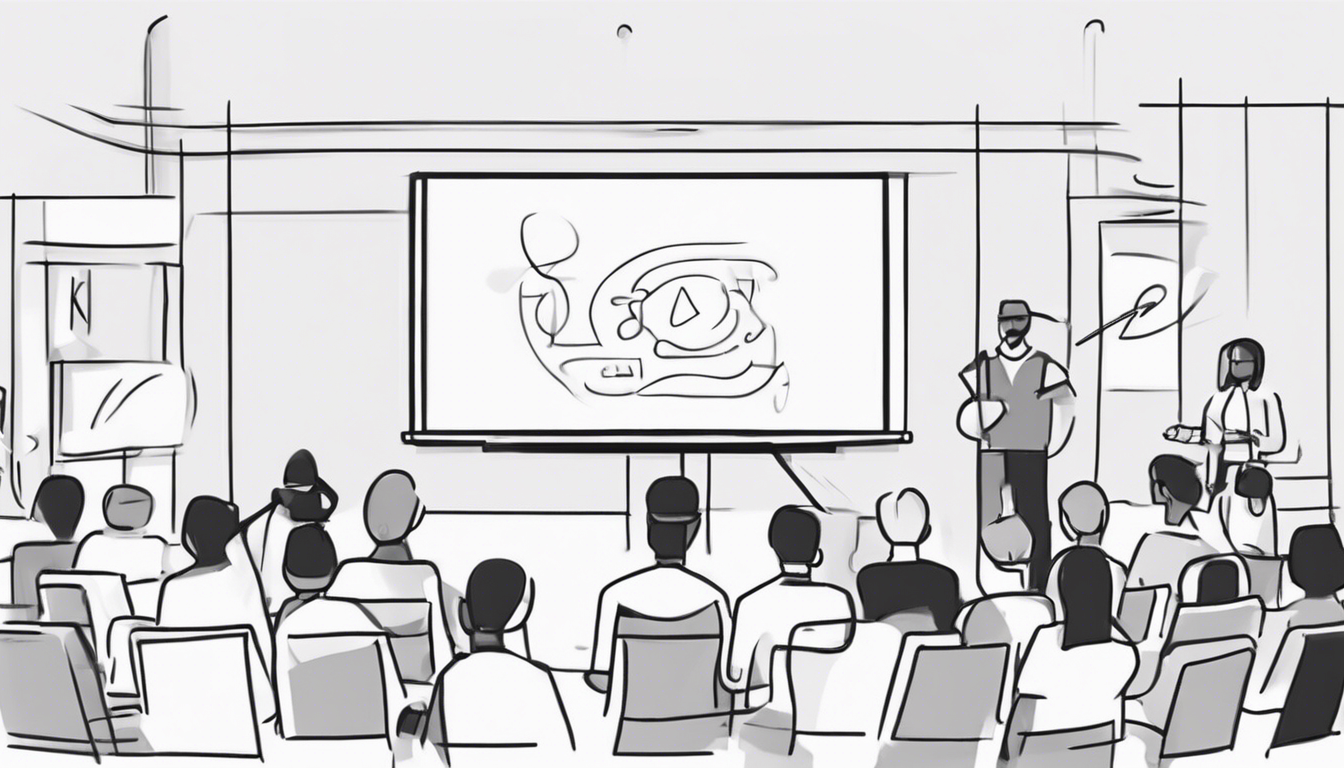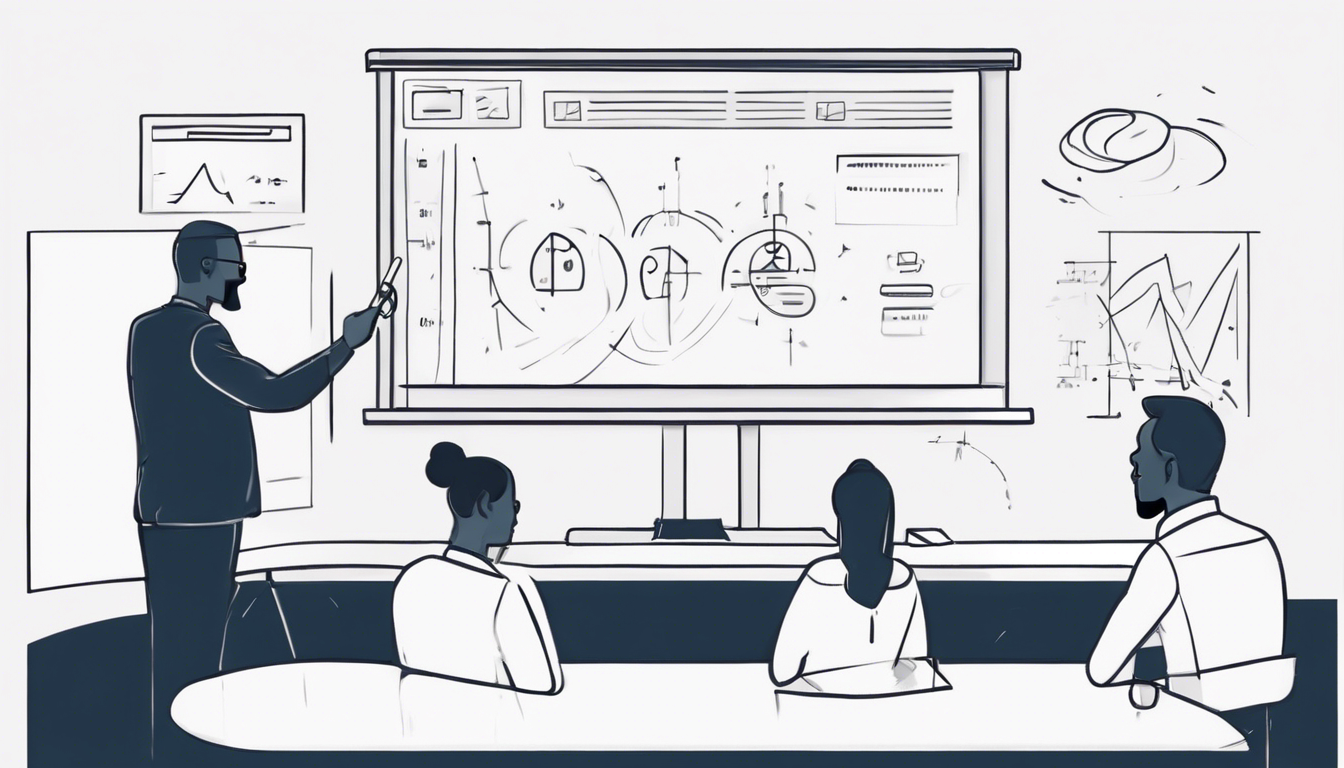Introduction to Cultural Sensitivity in Keynote Speaking

Welcome to the colorful world of keynote speaking, where cultural sensitivity plays a vital role in captivating audiences from diverse backgrounds. Cultural sensitivity refers to the awareness and respect for the beliefs, values, and customs of different cultures. In the realm of keynote speaking, understanding and embracing cultural sensitivity can elevate a speech from ordinary to extraordinary, creating meaningful connections with listeners worldwide.
The importance of cultural sensitivity in keynote speaking cannot be overstated. It is the key to fostering inclusivity, building trust, and resonating with audiences on a profound level. By acknowledging and honoring cultural differences, speakers can bridge divides, inspire change, and leave a lasting impact on their listeners. In today’s interconnected world, cultural sensitivity is not just a nice-to-have but a must-have skill for any speaker looking to make a meaningful difference.
In this article, we delve into the fascinating realm of cultural sensitivity in keynote speaking, exploring its significance, challenges, strategies, and real-world examples. By the end of this journey, you’ll be equipped with the knowledge and insights to navigate the cultural tapestry of global audiences with grace and effectiveness.
Understanding Cultural Differences

Cultural norms and values form the foundation of societies worldwide, shaping how individuals perceive the world and interact with one another. From the emphasis on collectivism in some cultures to the celebration of individualism in others, these differences influence communication styles, decision-making processes, and social dynamics. Keynote speakers must grasp these nuances to tailor their messages effectively and connect with audiences on a deeper level.
Communication styles vary significantly across cultures, with some cultures valuing directness and assertiveness while others prioritize indirectness and harmony. Understanding these differences is crucial for speakers to convey their messages clearly and respectfully. By adapting their communication approach to align with the cultural preferences of their audience, speakers can enhance comprehension and engagement, fostering a more meaningful exchange of ideas.
The impact of cultural differences on keynote speaking is profound, influencing not only the content of speeches but also the delivery, tone, and overall effectiveness of communication. By embracing cultural diversity and tailoring their approach to resonate with diverse audiences, speakers can transcend language barriers and cultural divides, creating powerful moments of connection and understanding.
Challenges in Cross-Cultural Communication

Language barriers pose a significant challenge in cross-cultural communication, hindering the seamless exchange of ideas and limiting the effectiveness of keynote speeches. Speakers must navigate these barriers with sensitivity and creativity, using language as a tool to bridge divides and foster understanding. By incorporating multilingual elements or working with interpreters, speakers can overcome language obstacles and reach a broader audience.
Non-verbal communication differences, such as gestures, facial expressions, and body language, can lead to misunderstandings and misinterpretations in cross-cultural interactions. Speakers must be attuned to these nuances, adapting their non-verbal cues to align with the cultural norms of their audience. By demonstrating cultural awareness through non-verbal communication, speakers can enhance rapport, trust, and connection with listeners from diverse backgrounds.
Stereotypes and misconceptions can impede effective cross-cultural communication, perpetuating biases and hindering genuine dialogue. Speakers must challenge stereotypes, promote cultural understanding, and cultivate empathy to foster authentic connections with their audience. By addressing misconceptions head-on and embracing diversity in all its forms, speakers can create a more inclusive and welcoming environment for meaningful conversations to thrive.
Strategies for Culturally Sensitive Keynote Speaking

Researching the audience’s culture is a fundamental step in preparing for a culturally sensitive keynote speech. By delving into the customs, traditions, and values of the audience, speakers can tailor their content to resonate with their listeners effectively. This research enables speakers to avoid cultural faux pas, incorporate relevant examples, and demonstrate respect for the cultural heritage of their audience.
Adapting speech content and delivery to align with the cultural preferences of the audience is essential for creating a meaningful impact. Speakers must consider the tone, language, and storytelling techniques that best resonate with their listeners, ensuring that their message is received with openness and understanding. By customizing their approach to suit the cultural context, speakers can enhance engagement and connection with their audience.
Respecting cultural taboos and customs is a cornerstone of culturally sensitive keynote speaking. Speakers must be mindful of sensitive topics, religious beliefs, and cultural practices that may be considered taboo or offensive to certain audience members. By demonstrating respect for these boundaries and adapting their speech content accordingly, speakers can foster a safe and inclusive environment for dialogue, learning, and mutual respect.
Case Studies of Successful Culturally Sensitive Keynote Speeches

Nelson Mandela’s speeches on unity and reconciliation serve as a powerful example of culturally sensitive communication. By advocating for peace, forgiveness, and understanding in post-apartheid South Africa, Mandela united a divided nation and inspired a global audience. His ability to empathize with diverse perspectives and promote inclusivity through his speeches remains a testament to the impact of cultural sensitivity in leadership.
Malala Yousafzai’s advocacy for girls’ education exemplifies the transformative power of culturally sensitive messaging. By championing the rights of girls to access education in the face of cultural opposition, Malala sparked a global movement for gender equality and empowerment. Her courage, empathy, and unwavering commitment to her cause showcase the profound influence of culturally sensitive keynote speeches in driving positive change.
Barack Obama’s speeches on diversity and inclusion resonate as a beacon of hope and unity in a world marked by division and prejudice. Through his eloquent articulation of the American dream and the importance of embracing diversity, Obama inspired millions to strive for a more inclusive society. His ability to connect with audiences from diverse backgrounds through messages of empathy and understanding underscores the enduring impact of culturally sensitive communication.
The Role of Empathy and Emotional Intelligence

Empathy lies at the heart of understanding cultural perspectives and fostering meaningful connections with diverse audiences. By putting themselves in the shoes of others, speakers can cultivate empathy, compassion, and a deeper appreciation for the experiences and challenges faced by different cultures. Empathy serves as a guiding light in navigating cultural differences, promoting respect, and building bridges of understanding between individuals.
Emotional intelligence plays a pivotal role in building connections and rapport with audiences from diverse backgrounds. By recognizing and managing their emotions effectively, speakers can convey authenticity, sincerity, and empathy in their communication. Emotional intelligence enables speakers to adapt to the emotional cues of their audience, respond with sensitivity, and create a supportive environment for open dialogue and mutual respect.
Empathy emerges as a key element of cultural sensitivity, underpinning the ability to connect with others on a human level and transcend cultural barriers. By embracing empathy in their interactions, speakers can foster trust, understanding, and inclusivity in their keynote speeches. The cultivation of empathy not only enhances the impact of the message but also paves the way for genuine connections that transcend cultural divides and unite audiences in shared experiences.
Addressing Controversial Topics with Cultural Sensitivity

Navigating sensitive issues respectfully is a delicate balancing act for keynote speakers aiming to address controversial topics with cultural sensitivity. By approaching contentious subjects with empathy, respect, and an open mind, speakers can foster constructive dialogue and promote understanding among diverse audiences. Navigating controversy requires a nuanced understanding of cultural perspectives, a commitment to listening, and a willingness to engage in difficult conversations with tact and diplomacy.
Balancing freedom of speech with cultural sensitivity is a complex challenge that requires speakers to uphold the principles of free expression while respecting the cultural values and beliefs of their audience. Speakers must exercise their right to speak truth to power while acknowledging the impact of their words on different cultural groups. By striking a balance between freedom of speech and cultural sensitivity, speakers can engage in meaningful discourse, challenge norms, and inspire positive change without causing harm or offense.
Using diplomacy and tact in keynote speeches is essential for addressing controversial topics with cultural sensitivity. Speakers must choose their words thoughtfully, consider the diverse perspectives of their audience, and approach sensitive issues with care and empathy. By fostering a climate of respect, openness, and understanding, speakers can navigate contentious subjects with grace and integrity, fostering dialogue, learning, and mutual respect among listeners with varying cultural backgrounds.
Training and Education for Culturally Sensitive Keynote Speaking

Workshops on cross-cultural communication provide speakers with valuable insights, tools, and strategies to enhance their cultural sensitivity and effectiveness in keynote speaking. By participating in workshops that focus on cultural awareness, intercultural communication, and diversity, speakers can expand their knowledge, skills, and perspectives to engage with diverse audiences authentically. These workshops offer a platform for speakers to learn from experts, share experiences, and cultivate a deeper understanding of cultural nuances.
Diversity training for public speakers equips individuals with the awareness, empathy, and cultural competence needed to navigate the complexities of diverse audiences. By engaging in training programs that address unconscious bias, cultural humility, and inclusive communication practices, speakers can enhance their ability to connect with listeners from different cultural backgrounds. Diversity training fosters a culture of respect, inclusivity, and appreciation for diversity in keynote speaking, empowering speakers to create meaningful impact.
Incorporating cultural sensitivity in speech coaching programs is essential for developing well-rounded and effective communicators. Speech coaches can help speakers refine their cultural awareness, adapt their communication styles, and navigate cultural differences with confidence and respect. By integrating cultural sensitivity into speech coaching sessions, speakers can hone their skills, expand their cultural competence, and deliver impactful keynote speeches that resonate with diverse audiences on a profound level.
Measuring the Impact of Cultural Sensitivity in Keynote Speaking

Audience feedback and reactions serve as valuable indicators of the impact of cultural sensitivity in keynote speaking. By soliciting feedback, engaging with audience responses, and seeking diverse perspectives, speakers can gain insights into the effectiveness of their communication strategies. Audience feedback provides speakers with a roadmap for improvement, highlighting areas of strength and opportunities for growth in fostering cultural sensitivity and connection with their listeners.
Social media response and engagement offer a digital lens through which speakers can gauge the reach and resonance of their culturally sensitive keynote speeches. By monitoring social media platforms, analyzing audience interactions, and tracking engagement metrics, speakers can assess the impact of their messages on diverse online communities. Social media provides a real-time feedback loop for speakers to adapt, refine, and amplify their culturally sensitive communication efforts to a global audience.
The long-term influence of cultural sensitivity in keynote speaking extends beyond immediate reactions to speeches, shaping audience perception, attitudes, and behaviors over time. By cultivating a reputation for cultural sensitivity, authenticity, and inclusivity in their communication, speakers can build trust, loyalty, and a dedicated following among diverse audiences. The enduring impact of culturally sensitive speeches lies in their ability to inspire change, foster understanding, and leave a lasting imprint on the hearts and minds of listeners worldwide.
Conclusion: Advancing Cultural Sensitivity in Keynote Speaking

In conclusion, the journey through the realm of cultural sensitivity in keynote speaking has illuminated the transformative power of understanding, respect, and empathy in connecting with diverse audiences. By embracing cultural sensitivity, speakers can transcend boundaries, foster inclusivity, and inspire change on a global scale. The call to action for speakers is clear: to embrace cultural sensitivity as a cornerstone of their communication, to champion diversity and inclusion in their messages, and to lead by example in advancing a more culturally aware and empathetic world.
As we look to the future of keynote speaking, the prospects for culturally inclusive communication are bright. By prioritizing cultural sensitivity, speakers can create meaningful connections, drive positive change, and shape a more inclusive and understanding society. The evolution of keynote speaking lies in the hands of those who dare to embrace diversity, empathy, and respect in their communication, paving the way for a world where cultural differences are celebrated, understood, and honored.
Let us embark on this journey together, united by the common goal of advancing cultural sensitivity in keynote speaking. By weaving the threads of understanding, empathy, and respect into the fabric of our speeches, we can create a tapestry of connection that transcends borders, languages, and cultures. The future of keynote speaking is bright, colorful, and rich with possibilities for those who dare to speak with cultural sensitivity, authenticity, and a genuine desire to make a difference in the world.





